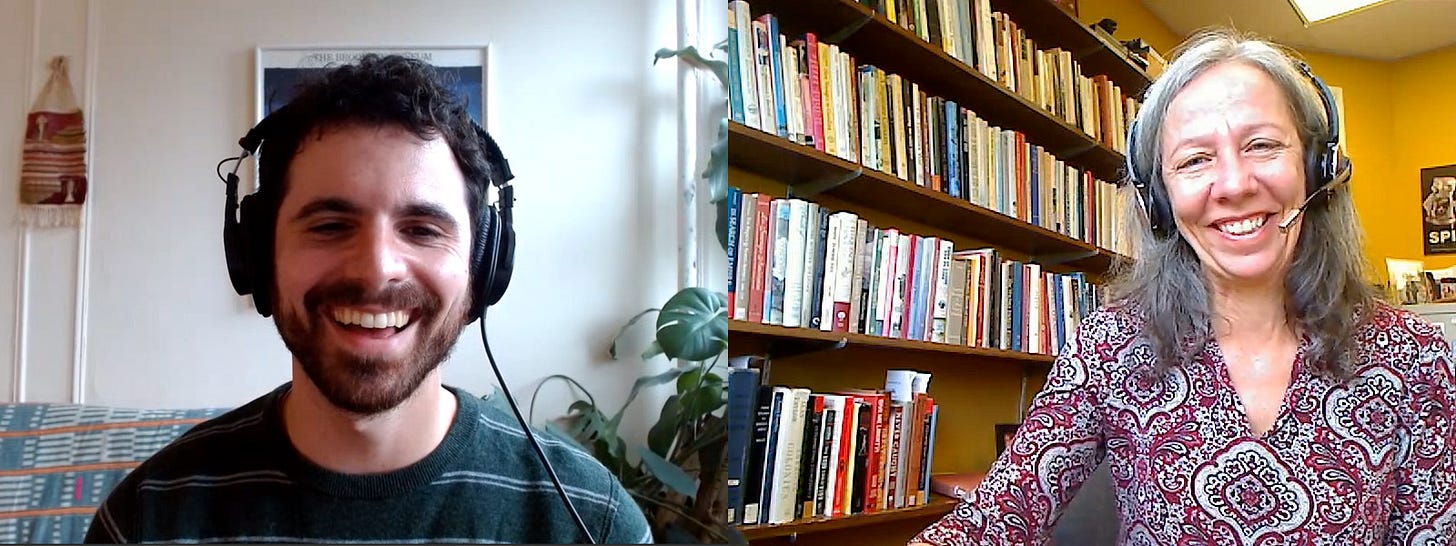Growing up, we’re often taught that there’s a natural societal progression from hunting and gathering, to farming, and then to towns and cities. But as Professor Kathleen DuVal (UNC-Chapel Hill) illuminates in Native Nations, and in conversation, that conception is very Eurocentric. It obscures, among many things, the vast landscape of Native American cities that existed before Europeans ever got here, and how for centuries, Native nations “controlled their relationships with Europeans, not the other way around.”
A condensed transcript of our conversation edited for clarity is below. You can also listen to the audio, which includes a discussion of the rise of “upside-down capitalism” in Native communities, the story of the father and daughter who first wrote down the Cherokee language, how Plains nations grew almost a little too powerful, why we can most accurately trace the origin of democratic traditions in the States to Native America, and more:
Urban Native America, and How Europeans Got It So, So Wrong
Listen now (~40 mins) | Audio of my conversation with Professor DuVal
Ben: To begin, can you talk about some of the great cities you explore in the book like Cahokia and Moundville?
KD: Sure. The book starts between the year 1000 and the 1200s, with the rise of cities all across North America. Cahokia is representative of that era.
Cahokia was across the Mississippi River from where St. Louis is today. It depended on pretty extensive corn agriculture, parallel to cities in other parts of the world at the time. It was as centralized and powerful as the cities of Western Europe.
Cities, at least the ones in the Mississippi Valley like Cahokia, didn't leave stone ruins and buildings like that. (The ones in the Southwest actually did.) But what is left of Cahokia today are these giant human-made “mounds.” The great buildings of Cahokia were on top of the mounds. It would’ve looked like a tremendous city at the time.
There was another huge complex of a city, a little more spread out than Cahokia, in what's now Alabama. White Alabamans came across the ruins and called it Moundville, which is just not romantic at all.
Ben: Yeah, it's a little like calling New York “Buildingtown.”
KD: Exactly.
Ben: Or Tokyo, “Trainplace.”
KD: Right.
Ben: Or like coming across the Amazon and just calling it, “Trees.”
KD: Ha! That's right. When white people in the 19th century came across the old cities, they thought Native Americans were so primitive that they couldn't possibly have had cities. Some argued the mounds were natural hills, though they were clearly human-made. Others just sort of imagined they were built by somebody else.
Ben: I noted that Noah Webster, the prominent educator (and dictionary author), hypothesized that Spaniards had built the mounds when journeying through North America from 1539-1542, which would mean that a handful of people had moved millions and millions of cubic feet of dirt by hand in less than four years.
KD: Meanwhile, he ignored the Spaniards’ accounts, which indicate they knew the buildings belonged to and were built by Native people.
Ben: In Webster’s defense, we often forget that the full expression is, “Rome wasn’t built in a day, but Madrid was!”
KD: Good point.
Ben: You talk about the decentralized shift in Native living and governance in response to climactic changes from 1200 to 1400. Can you elaborate a little?
KD: So, the Medieval Warm Period, which began in the 900s AD, was a time when large-scale agriculture spread to new places in the world, including Western Europe and Central Mexico up into North America.
In the 1200s, there was a period of extreme drought and then this slow slide into what would become the Little Ice Age —
Ben: — the cutest name for a period of time.
KD: It was not cute to live through.
Ben: Fair enough.
KD: And different civilizations responded in different ways.
Inhabitants of what's now the U.S. and Northern Mexico began to depend less on extensive agriculture. Instead, across most of North America, people built civilizations with diversified economies, relying more on hunting, gathering, fishing, and reciprocal trading with other societies. They intentionally grew less dependent on large-scale agriculture, which had become less dependable with changes to the climate.
When Europeans arrived, it was after all these changes. They just assumed Native Americans were more primitive; that they were still in a hunting-gathering stage — when in fact that whole trajectory from hunter-gatherer to civilization is just made up, right? It completely ignored this purposeful transition to a more sustainable way of life.





